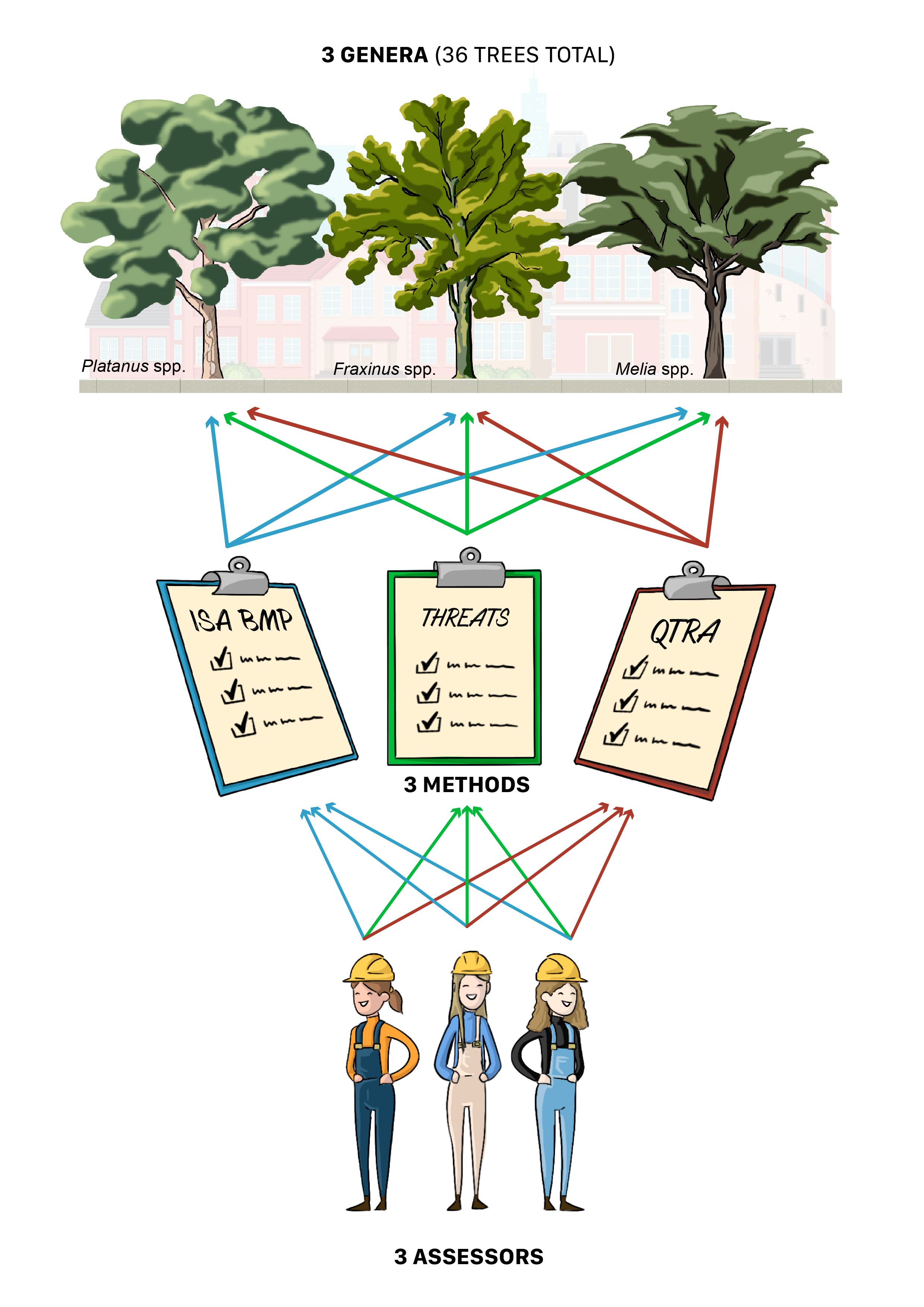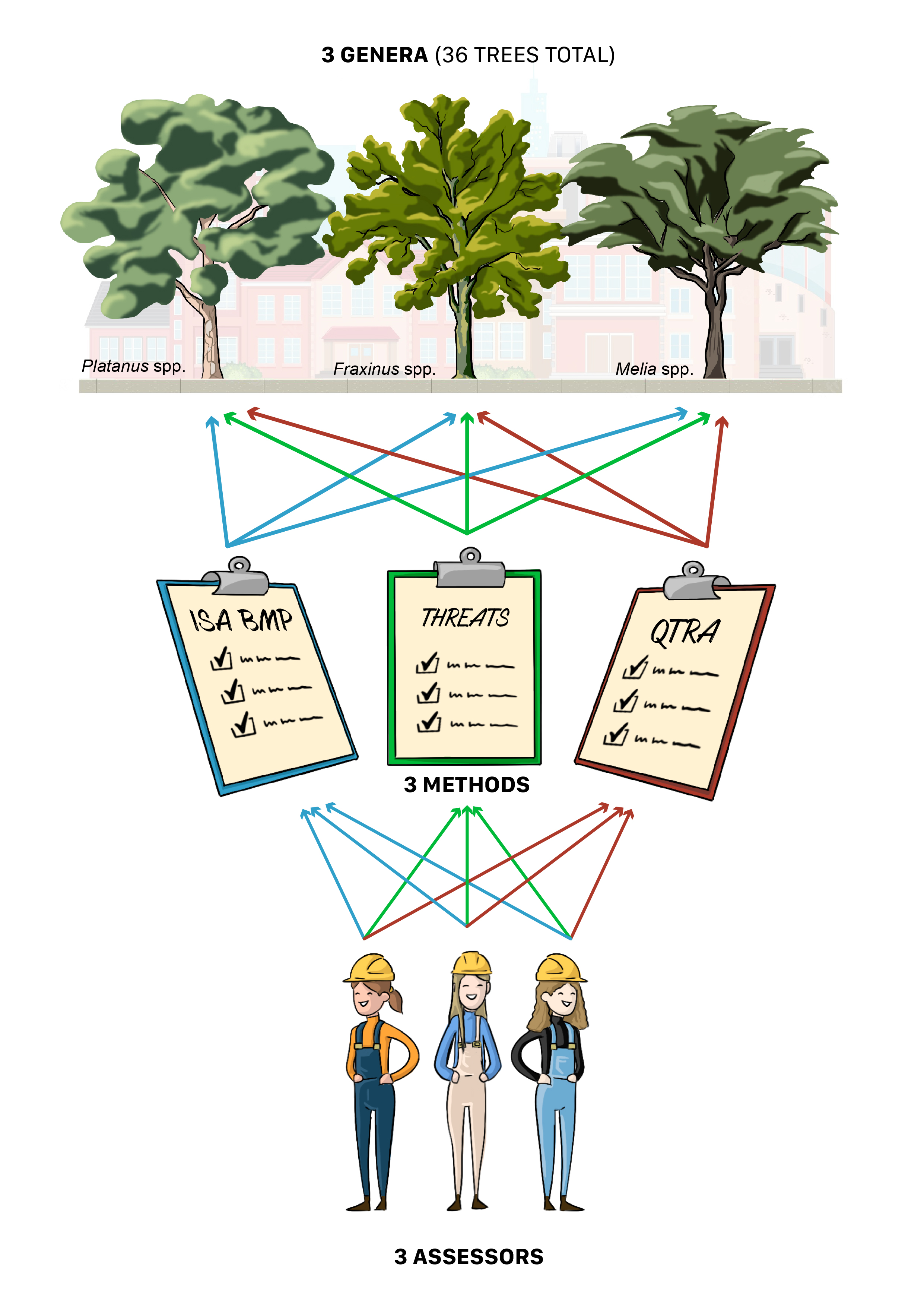Comparison of visual risk assessment methods applied in street trees of Montevideo city, Uruguay
DOI:
https://doi.org/10.48162/rev.39.081Palabras clave:
arboricultura, árbol peligroso, componentes del riesgo, riesgo del árbol, bosque urbanoResumen

Risk assessment of urban trees is an incipient practice in Latin America, generally performed with foreign methods, due to the lack of qualified personnel and locally validated or adapted methodology. This article evaluates the application of three methods on street trees in Montevideo city, Uruguay: Tree Hazard Risk Evaluation and Treatment System (THREATS), Quantified Tree Risk Assessment (QTRA) and Best Management Practices - Tree Risk Assessment (ISA BMP). Three assessors with similar experience applied three methods in 36 trees of three widely used genera, totaling 324 assessments and 1,296 data. The methods were decomposed into the components: Likelihood of Failure, Likelihood of Impact, Consequence and Risk Rating. The data were statistically analyzed through a generalized linear mixed model (p<0.05), for the factors: assessor, method, genus, and their interactions. Results showed no significant differences among assessors, but there were differences among methods, specifically for the Likelihood of Impact and Risk Rating components. The ISA BMP method presented higher means in these last two components. Still, this method is suggested for street trees in Montevideo until a more appropriate method is adapted or developed for local conditions.
Highlights
- No significant differences were found among assessors, which encourages standard training for all assessors.
- The ISA BMP method presented the highest results for the likelihood of impact and risk rating.
- Target occupation rate influenced differences among genera found for the likelihood of impact component.
- The ISA BMP method is suggested for street trees risk assessment in Montevideo, until a method is adapted or developed.
- The absence of descriptors and categorizations, as well as the application time, need to be improved.

Descargas
Publicado
Número
Sección
Licencia
Derechos de autor 2018 Revista de la Facultad de Ciencias Agrarias UNCuyo

Esta obra está bajo una licencia internacional Creative Commons Reconocimiento-NoComercial-CompartirIgual 3.0.
Aquellos autores/as que tengan publicaciones con esta revista, aceptan las Políticas Editoriales.



